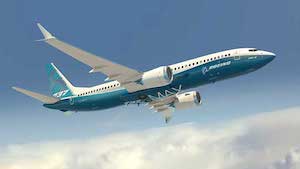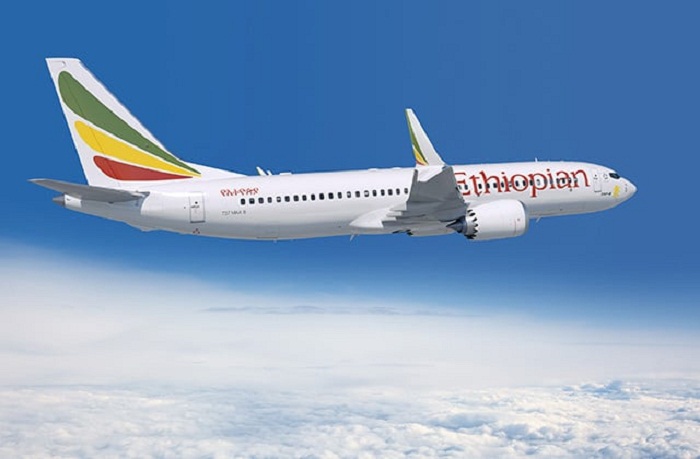
A week after the second deadly crash of a 737 Max 8, Boeing is facing massive scrutiny over one of its newest and most critical aircraft models. The airliner remains grounded around the world and Congress and the Trump Administration are calling for an investigation into the FAA’s certification process.
The developments are a huge blow to Boeing, which has thousands of 737 Max orders on its books. The causes of both crashes, which at this point appear to be similar, are still under investigation and the official reports won’t be published for months. Until then, here’s what we know:
What’s the current status of the Max 8?
Most operators quickly grounded their planes in the days following the second crash on March 10. That list includes both Ethiopian Airlines and Lion Air, but also AeroMexico, Aerolíneas Argentinas, GOL Linhas Aéreas (Brazil), Turkish Airlines, S7 Airlines (Russia), FlyDubai, Air Italy, Cayman Airways, Norwegian, China Eastern Airlines, Fiji Airways and Royal Air Maroc.
More than 40 countries have also banned the 737 Max from flying in their airspace. China (a huge Boeing customer and a fast-growing commercial aviation market) led the way and was joined by Indonesia, Thailand, Malaysia, Australia, India, Oman, the European Union and Singapore, Canada initially hesitated, but soon reversed course.
Up until March 13, the FAA also declined to join the grounding order, saying in a statement tweeted the previous day that there is “no basis to order grounding the aircraft.” That was despite a public outcry from a group of senators and two flight attendant unions. But along with Trump’s order, the agency said it issued the order due to new evidence it collected and analyzed (see below). The grounding will remain in effect pending further investigation.
Southwest and American have pulled their 737 Max 8s from service and have adjust their schedules to make up for the lost aircraft. The only other holdout, Panama’s Copa Airlines, has grounded its planes, as well. The order also has grounded the 737 Max 9, currently in service with United Airlines.
Older 737 models, like the 737-700, 737-800 and 737-900 don’t use the flight control system under investigation and aren’t affected.
What happened in the most recent crash?
On March 10, Ethiopian Airlines flight 302 departed Addis Ababa Bole International Airport bound for Nairobi, Kenya. Just after takeoff, the pilot radioed a distress call and was given immediate clearance to return and land. But before the crew could make it back, the aircraft crashed 40 miles from the airport at 8:44 a.m., six minutes after it left the runway. Aboard were 149 passengers and eight crew members representing more than 30 nationalities.

The aircraft involved was only four months old. Africa’s largest airline, Ethiopian serves cities worldwide (including the US) and is a member of Star Alliance, which includes United Airlines, Lufthansa and Air China. And despite Sunday’s crash, and contrary to what some television presenters might think, Ethiopian has a strong safety record. The airline’s last fatal crash happened in 2010.
What was the previous crash?
On Oct. 29, 189 people were killed when Lion Air flight 610 crashed in the Java Sea 13 minutes after takeoff from Jakarta, Indonesia. As with the Ethiopian crash, the flight crew lost control early in its flight and made a distress call. That aircraft was almost brand-new as well, having arrived at Lion Air three months earlier.
What is the Boeing 737 Max 8?
One of Boeing’s newest airliners, the 737 Max 8 made its first flight on Jan. 29, 2016, and entered passenger service with Malaysia’s Malindo Air on May 22, 2017. Seating between 138 and 158 passengers, depending on the configuration, it’s popular on shorter routes, but also has the range (3,850 nautical miles) to fly transatlantic and between the mainland US and Hawaii.
The design of the Max 8 is based on the Boeing 737, an aircraft series that has been in service since 1968. As a whole, the 737 family is the best-selling airliner in history. At any given time, thousands of some version of it are airborne around the world and some airlines, like Southwest and Ryanair, have all-737 fleets.
What’s different about the Max 8?
Compared with previous 737 versions, the Max 8 has bigger, more powerful and more efficient CFM LEAP engines (more on those in a minute), improved aerodynamics and a redesigned cabin that redesigned cabin. It also can fly farther and carry more people than the previous generation of 737s, like the 737-800 and 737-900.
The 737 Max series consists of four models, of which the Max 8 is the most popular. The larger Max 9 has been flying only for a few months and the 737-10 is still in development and has yet to fly. A few airlines have ordered the smaller 737 Max 7, but Boeing has yet to complete any deliveries. (It flew for the first time last May.)
What caused the crashes?
We don’t know the official reason, and we won’t know for a long time. Remember that crash investigations are tremendously complex — it takes months to evaluate the evidence and determine a probable cause. Investigators must examine the debris, study the flight recorder (the “black box”) and, if possible, check the victims’ bodies to determine the cause of death. Though an investigation team arrived in Jakarta hours after the Lion Air crash, a full report isn’t due until August or September. Crash investigations also involve multiple groups, including the airline, the aircraft and engine manufacturers and government agencies like the FAA and the US National Transportation Safety Board that regulate airline safety. Coordinating their efforts takes time.
What are the investigations focusing on?
Remember those larger CFM LEAP engines? Well, because they’re bigger, and because the 737 sits so low to the ground (a deliberate design choice to let it serve small airports with limited ground equipment), Boeing moved the engines slightly forward and raised them higher on their underwing pylons. (If you place an engine too close to the ground, it can suck in debris while the plane is taxiing.) That change allowed Boeing to accommodate the engines without completely redesigning the 737 fuselage.
But the new position changed how the aircraft handled in the air, creating the potential for the nose to pitch up during flight. A pitched nose is a problem in flight — raise it too high and a plane can stall. To overcome this action, Boeing designed software called the Maneuvering Characteristics Augmentation System, or MCAS. When a sensor on the fuselage detects that the nose is too high, MCAS automatically pushes the nose down.
Investigators in the Lion Air crash have said that a fault in the the sensor may have been feeding incorrect data to MCAS, pitching the nose down into a dive. According to the preliminary report (PDF) from the Indonesian National Transportation Safety Committee, the Lion Air pilots were unable to determine their true airspeed and altitude and they struggled to take control of the plane before the crash, as it oscillated for 10 minutes. Each time they pulled up from a dive, the system pushed the nose down again. (For a thorough explanation of MCAS, see this story from The Air Current.)
The report also noted that maintenance crews had replaced the faulty sensor two days before the flight and that pilots on the four flights preceding the crash reported incorrect airspeed and altitude information (a passenger likened one of those flights to a “roller coaster ride”). The aircraft also lacked a warning light that would have alerted the pilots to the fault.
Are the two crashes related?
So far it appears that they are. Investigators in France are still examining the black boxes from the second crash, but Ethiopia’s Transport Minister said yesterday that two crashes have “clear similarities.” Though he didn’t elaborate, satellite data released last week showed its final flight track was similar to that of the Lion Air plane. The FAA cited that data in its grounding order.
Investigators at both crash sites have also recovered the jack screws, which manipulate the control surfaces on the horizontal stabilizer that pitch the nose up and down. Both jack screws were set to send the planes into a dive.
How has Boeing responded?
On Nov. 6, Boeing issued a safety warning advising 737 Max operators of the potential for a sensor failure and instructing them how to deactivate MCAS by flipping a switch. But two days later, The Seattle Times reported that Max 8 pilots were not specifically trained on using MCAS. The reason? According to The New York Times, it was because Boeing, backed by the FAA, wanted to minimize the cost and time of certifying pilots who had already been trained on other 737 versions. An investigation by The Dallas Morning News found that several Max 8 pilots had complained about the inadequate training.
Following the second crash, the company expressed sympathy for the victims’ families and said it was sending an investigation team. Then on March 12, Boeing said it’s continuing to work with Max 8 customers that have grounded their aircraft.
“Safety is Boeing’s No. 1 priority and we have full confidence in the safety of the 737 Max,” the statement said. “The United States Federal Aviation Administration is not mandating any further action at this time, and based on the information currently available, we do not have any basis to issue new guidance to operators.”
“There is no greater priority for our company and our industry,” the statement said. “We are doing everything we can to understand the cause of the accidents in partnership with the investigators, deploy safety enhancements and help ensure this does not happen again.”
As is common after a crash, Boeing has not commented on specific aspects of the investigation, but on March 11, it said it would issue a software update by the end of April that would include changes to MCAS, pilot displays, operation manuals and crew training. When Boeing issues the update, the company says the FAA will issue an airworthiness directive ordering 737 Max operators to make the change.
The Wall Street Journal reported March 12 that the software might have come earlier, but it was delayed by the 35-day US government shutdown earlier this year.
What does this mean for the FAA?
The agency is now under fire on multiple fronts over the crashes. Both Congress and Secretary of Transportation Elaine Chao have called for an audit over the FAA’s certification process. Under scrutiny is whether Boeing employees acted on behalf of the FA during the certification process and whether pilots flying the 737 Max should have received additional training. The Justice Department’s criminal division also is investigating the airplane, The Washington Post reported.
What has to happen before the Max can fly again?
First off, investigators need to agree on a cause for both crashes. Then, once Boeing develops a fix, the FAA needs to certify the fix as safe and order airlines to implement it and to train pilots appropriately. There’s no telling how long that will last.
But that’s just in the United States. Aviation regulatory agencies around the world, like the European Aviation Safety Agency, also need to approve the fix before they’ll let the Max fly to the countries they oversee. Traditionally, they’ve followed the FAA’s lead on such matters, but there’s no guarantee they will. Two crashes in five months is a troubling record for a plane that entered service barely two years ago and airlines will have to reassure passengers the planes are safe.
Even with the grounding order, Boeing is permitted to conduct test flights. Also, airlines are allowed to ferry empty Max aircraft back to their home airports and maintenance bases.
Are airplanes now too complicated?
On March 12, Trump tweeted that airplanes are “becoming far too complex to fly.” The reality isn’t quite that simple. Commercial airliners have used automated systems for decades (that’s what an automatic pilot is). The Lockheed L-1011, introduced in 1972, could land itself. Most airliners flying today also are “fly-by-wire,” meaning that a pilot’s commands are carried as electronic signals (rather than over hydraulic lines) to an aircraft’s control services. Flight computers also continually stabilize an aircraft during flight without input from the flight crew. Boeing and Airbus have different philosophies for this interaction, but explaining those could take a book.
Source: cnet.con
